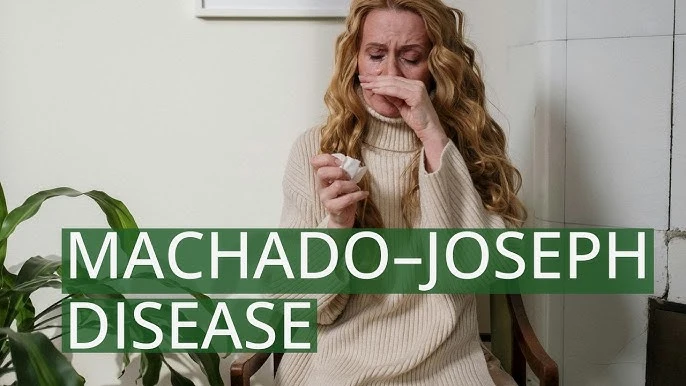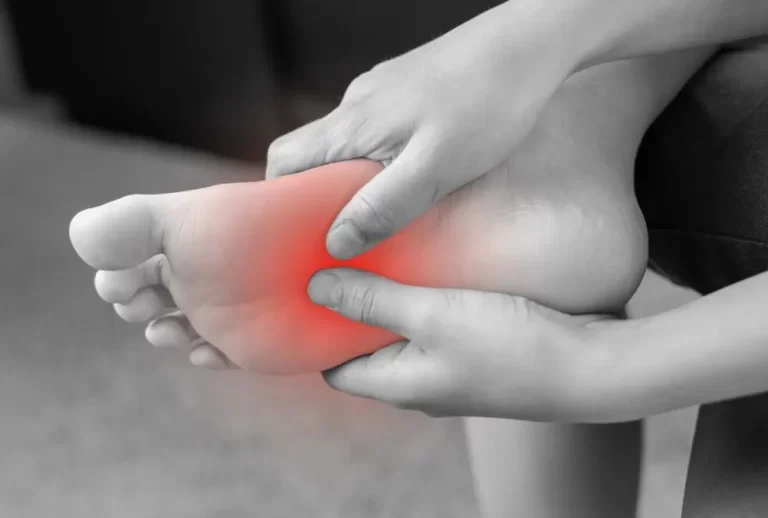Machado-Joseph Disease
Introduction
Spinocerebellar ataxia type 3, also known as Machado-Joseph disease, is an inherited neurological illness that impairs muscle function, leading to a lack of balance and coordination. As a result of the disease, your arms and legs gradually become less coordinated. Although there is currently no known cure for Machado-Joseph disease, medication can help control its symptoms.
Slowly increasing arm and leg clumsiness, a faltering gait, trouble speaking and swallowing, poor eye movements, with double vision or bulging eyes, and lower limb spasticity are the hallmarks of SCA3, also called Machado-Joseph disease. Some people get dystonia, which is characterized by prolonged contractions of the muscles that cause the body and limbs to twist, repetitive motions, and distorted postures, or Parkinson’s disease symptoms, like stiffness and slowness of movement.
Other individuals may experience issues with urination, neuropathy, sleep disturbances, facial or tongue twitches, or the autonomic nervous system, which controls bodily processes including breathing, digestion, heart rate, and blood pressure.
Spinocerebellar ataxia type 3, another name for Machado-Joseph disease (MJD), is a rare inherited ataxia (ataxia is a medical term meaning lack of muscle control). Slowly increasing weakness and clumsiness in the arms and legs, spasticity, a startling lurching stride that may be mistaken for intoxication, trouble swallowing and speaking, involuntary eye movements, double vision, and frequent urination are the disease’s hallmarks.
Some people also have Parkinson’s disease-like symptoms or dystonia, which is characterized by prolonged muscle contractions that induce rigidity, repetitive motions, abnormal postures, and twisting of the body and limbs. Others exhibit strange bulging eyes or facial or tongue twitches.
Machado-Joseph disease: what is it?
Machado-Joseph disease (MJD) is an inherited ataxia disease. A degenerative (slowly progressing) disorder affecting the neurological system is ataxia. It may interfere with your muscle control, leading to poor balance and coordination. In particular, the illness causes your limbs (arms and legs) to become less coordinated over time.
People with Machado-Joseph illness may have difficulty swallowing and speaking, and they may have a characteristic, stumbling stride. This kind of spinocerebellar ataxia is the most prevalent.
Types of Machado-Joseph disease
There are three categories of Machado-Joseph disease. The type is determined by the severity of the symptoms and the age at which they began. These kinds are:
Type I (MJD-I):
- Age of onset: 10-30 years
- Progression: Fast
- Symptoms: Severe dystonia, rigidity, and ataxia
Type II (MJD-II):
- Age of onset: 20-50 years
- Progression: Intermediate
- Symptoms: Ataxia, spastic gait, enhanced reflex responses
Type III (MJD-III):
- Age of onset: 40-70 years
- Progression: Slow
- Peripheral neuropathy symptoms include ataxia, muscular twitches, weakness, atrophy, and strange feelings.
Causes
There are several aberrant repetitions of this DNA region. This is referred to by geneticists as “CAG” trinucleotide repeats, or triplets. Cytosine-Adenine-Guanine is referred to as CAG.
This anomaly is present in 56–86 copies of DNA in patients with Machado-Joseph disease. The number of CAG repeats you have has a direct impact on the severity of your ailment and the age at which you begin to experience symptoms.
The disorder has an autosomal dominant inheritance pattern. This implies that a child can have the syndrome if only one of their biological parents carries the gene. One gene expression is all that is required to have MJD.
Symptoms of Machado-Joseph disease (MJD)
Type I
Type I symptoms are severe and progress rapidly. They may include:
- Dystonia
- Muscle stiffness (rigidity).
- Too much muscle tone (hypertonia).
- Awkward body movements (ataxia).
- Staggering, lurching gait (walk).
- Slurred speech.
- Trouble swallowing (dysphagia).
- Bulging eyes (proptosis).
Type II
- Uncontrolled, continuous muscle spasms (spasticity).
- Muscle spasms (spastic gait).
- Poor reflexes.
- Ataxia is a lack of ability to coordinate arm and leg movements.
Type III
- Muscle twitching.
- Loss of muscle tissue (atrophy).
- Unsteady gait.
- Other Machado-Joseph disease symptoms may include:
- Double vision (diplopia).
- Inability to control eye movements (nystagmus).
- Hand trembling.
- Issues with balance and coordination.
- Tongue or facial twitching.
- Sleep disorders.
- Chronic low back pain.
When combined, several symptoms can mimic those of other neurologic conditions, such as Parkinson’s disease or multiple sclerosis. See a doctor if you experience any new or worsening symptoms, particularly if they interfere with your movement and bodily functions.
Diagnosis
A doctor will check you out physically and ask you about your problems. Your biological family history is essential. Inquire about the onset and severity of any symptoms that other members of your family may be experiencing.
For confirmation of a diagnosis of Machado-Joseph illness, your physician will suggest genetic testing. Your doctor can use a genetic test to determine how many suspected CAG triplets are present on your 14th chromosome.
Treatment
Although MJD cannot be cured, some of its symptoms can be managed. Levodopa therapy has long been beneficial for people with Parkinsonian symptoms. Spasticity can be lessened by antispasmodic medication, such as baclofen. Additionally, severe spasticity and certain dystonia symptoms can be treated with botulinum toxin.
Speech therapy and medication can be used to treat swallowing difficulties and speech issues. Patients who suffer from gait issues may find that physiotherapy helps them manage their handicap. Wheelchairs and walkers are examples of physical aids that might help with daily tasks.
- Unfortunately, Machado-Joseph disease has no known cure. Medication is used as part of MJD treatment to control your symptoms. These drugs could consist of:
- Dystonia and muscle spasms can be reduced by Baclofen (Lioresal®) or Botulinum toxin (Botox®).
- Slowness and stiffness can be reduced with levodopa medication.
- Additionally, assistive technology and physical therapy can help people move and perform daily tasks. Prism glasses may lessen double or blurred vision in cases of visual complaints.
Inquire with your doctor about the likelihood of a clinical trial for the illness.
- No Cure: MJD is currently incurable and has no known cure.
- Treatment aims to improve quality of life and manage symptoms.
- Physical Therapy: Physical therapy can support the preservation of function and mobility.
- Drugs: Drugs can be used to treat some symptoms, like pain or stiffness.
- Genetic Counseling: By educating people and families on the inheritance pattern of MJD, genetic counseling can assist them in making well-informed decisions regarding family planning and testing.
Prognosis
The life expectancy of patients with severe forms of MJD is about 35 years. People with mild conditions typically have normal lives. Aspiration pneumonia is frequently the cause of mortality for those who pass away too soon.
Machado-Joseph disease does not have a researcher’s name, in contrast to many other illnesses. It has the names of two individuals, “William Machado” and “Antonne Joseph,” who were the heads of the households where the illness was first reported.
Prevention
MJD is a hereditary disorder that cannot be prevented. Before making plans to become pregnant, consult a genetic counselor if you are worried about passing the problem on to your biological offspring. In vitro fertilization (IVF) combined with genetic testing may be able to stop your offspring from inheriting MJD.
FAQs
What is the cause of Machado-Joseph’s disease?
A mutation in the ATXN3 gene, found on chromosome 14 (14q32.1), is the cause of the illness. The gene’s long, asymmetrical CAG repeats in exon 10 result in the mutant protein known as ataxin-3. In most cases, there are between 13 and 41 copies.
How long may a person with Machado-Joseph disease expect to live?
Anytime from early adolescence to roughly age 70, symptoms may appear. The symptoms of MJD worsen over time because it is a progressive condition. For people with mild types of MJD, life expectancy is normal, whereas for those with severe versions, it is in the mid-thirties.
Does Machado-Joseph disease have a treatment?
Machado-Joseph disease has no known cure, although there are therapies to control its symptoms. Based on the identification of the gene variations responsible for each kind, the term “spinocerebellar ataxias” (SCA) refers to a collection of over 30 distinct neurologic disorders that are typified by ataxia and associated issues.
Machado-Joseph disease was discovered by whom?
Spinocerebellar ataxia type 3 (SCA 3), also known as Machado-Joseph disease (MJD), was first identified among descendants of An tone Machado’s (William Machado), Thomas, and Joseph lineages from São Miguel Island, Azores, Portugal.
How is Joseph Machado’s sickness treated?
Spinocerebellar ataxia type 3 (SCA3), also known as Machado-Joseph disease (MJD), is one of the most common inherited ataxias. Despite previous efforts by experts, there is no cure or disease-attenuating medication for SCA3, as there is for other ataxias.
Is it painful to have Machado-Joseph disease?
Most patients’ pain is likely complex and categorized as musculoskeletal. One common and incapacitating symptom in MJD/SCA3 patients is cramping.
What is the prevalence of Machado-Joseph’s disease?
With a median frequency of 1–5/100,000, Machado-Joseph disease (MJD) is the most prevalent ataxia worldwide. Two major ancestral lineages are currently recognized to exist globally.
Reference
- Machado-Joseph Disease. (2025, April 7). Cleveland Clinic. https://my.clevelandclinic.org/health/diseases/machado-joseph-disease
- Spinocerebellar Ataxias, including Machado-Joseph Disease. (n.d.). National Institute of Neurological Disorders and Stroke. https://www.ninds.nih.gov/health-information/disorders/spinocerebellar-ataxias-including-machado-joseph-disease#:~:text=SCA3%20(also%20known%20as%20Machado,eyes%2C%20and%20lower%20limb%20spasticity.
- Wikipedia contributors. (2025a, January 1). Machado–Joseph disease. Wikipedia. https://en.wikipedia.org/wiki/Machado%E2%80%93Joseph_disease#:~:text=issues%20with%20swallowing.-,Prognosis,is%20not%20named%20after%20researchers.
- Machado-Joseph Disease. (n.d.). https://www.brainfacts.org/diseases-and-disorders/neurological-disorders-az/diseases-a-to-z-from-ninds/machado-joseph-disease#:~:text=Machado%2DJoseph%20disease%20(MJD),inability%20to%20control%20eye%20movements.







